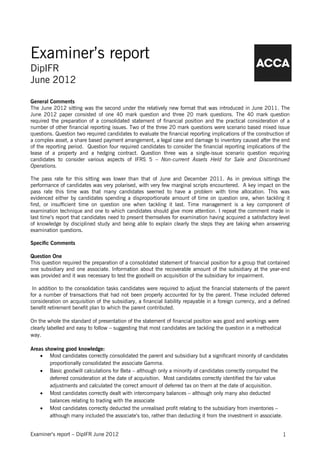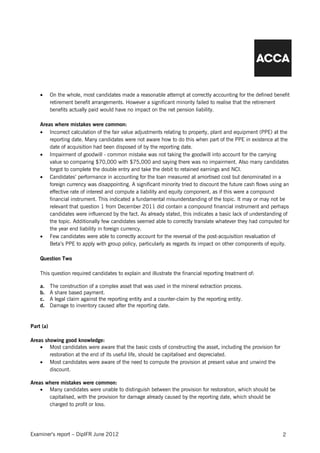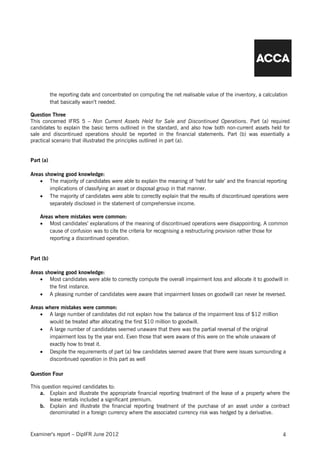The June 2012 DipIFR exam sitting had a lower pass rate than the previous two sittings. Many candidates struggled with time management, spending too much time on the first question. The exam consisted of one 40-mark question requiring consolidated financial statements and issues, and three 20-mark mixed issues questions. Performance was polarized, with few marginal scripts. Common mistakes included not properly accounting for deferred consideration, foreign currency loans, and defined benefit plans in question one.




